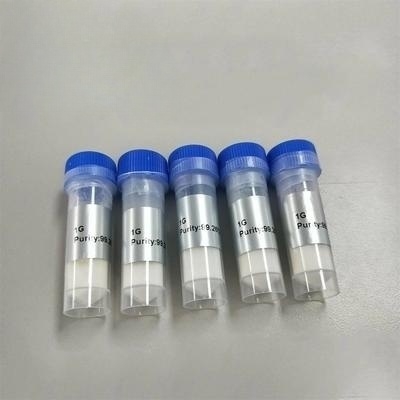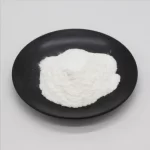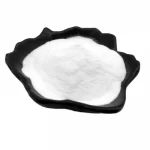Description
BETA HCG Human Chorionic Gonadotropin Hormone 5000IU Cas 56832-34-9
Description
| Name: | HCG | CAS No.: | 56832-34-9 |
|---|---|---|---|
| Storage: | −20°C | Appearance: | Powder |
| MOQ: | 10 Mega Or 1 Box | Shelf Life: | 1 Year. |
| Purity: | 98% Min | ||
| High Light: |
Human Chorionic Gonadotropin Hormone 5000IU, Human Chorionic Gonadotropin Hormone Cas 56832-34-9, BETA HCG Cas 56832-34-9 |
||
BETA-HCG Human Chorionic Gonadotropin 5000IU Steroid and Hormone raw powder 10 mega
supply both raw powder(sold in megas) and lyophilized powder in vials(5000IU/vial, 10 vials/box).
Lead time of raw powder is 10 days after paid.
Product introduction
Human Chorionic Gonadotropin (hCG) is a prescription medication containing chorionic gonadotropin obtained from a natural (human) origin. Chorionic gonadotropin is a polypeptide hormone normally found in the female body during the early months of pregnancy. It is synthesized in syncytiotrophoblast cells of the placenta, and is responsible for increasing the production of progesterone, a pregnancy-sustaining hormone. Chorionic gonadotropin is present in significant amounts only during pregnancy, and is used as an indicator of pregnancy by standard over-the-counter pregnancy test kits. Blood levels of chorionic gonadotropin become noticeable as early as seven days after ovulation, and rise evenly to a peak at approximately two to three months into gestation. After this point, the hormone level will drop gradually until the point of birth.
Although it possesses minor FSH-like (Follicle Stimulating Hormone) activity, the physiological actions of chorionic gonadotropin mainly mimic those of the gonadotropin luteinizing hormone (LH). As a clinical drug, hCG is used as an exogenous form of LH. It is typically applied to support ovulation and pregnancy in women, most specifically those suffering from infertility due to low concentrations of gonadotropins and an inability to ovulate. Due to the ability of LH to stimulate the Leydig’s cells in the testes to manufacture testosterone, hCG is also used with men to treat hypogonadotropic hypogonadism, a disorder characterized by low testosterone levels and insufficient LH output. The drug is also used in the treatment of prepubertal cryptochidism, a condition in which one or both of the testicles have failed to descend into the scrotum. HCG is used by male athletes for its ability to increase endogenous testosterone production, generally during, or at the conclusion of, a steroid cycle, when natural hormone production has been interrupted.
Administration (General):
Human Chorionic Gonadotropin is generally given by intramuscular (IM) injection. The subcutaneous route is also used, and has been deemed to be roughly equivalent therapeutically to IM injections.770 Peak concentrations of chorionic gonadotropin occur approximately 6 hours after intramuscular injection, and 16 to 20 hours after subcutaneous injection.
Administration (Men):
When used to treat hypogonadotropin hypogonadism, current FDA-approved protocols recommend either a short 6-week program, or a long-term program lasting up to 1 year, depending on the individual needs of the patient. Prescribing guidelines for short-term use recommend that 500 to 1,000 units to be given 3 times a week for 3 weeks, followed by the same dose twice a week for 3 weeks. The long-term recommendations call for 4,000 units to be administered 3 times weekly for 6 to 9 months, after which point the dosage is reduced to 2,000 units 3 times weekly for an additional 3 months. Bodybuilders and athletes use hCG either on cycle, in an effort to maintain testicular integrity during steroid administration, or after a cycle, to help restore hormonal homeostasis more quickly. Both types of use are deemed effective when properly applied.
Post-Cycle:
Human Chorionic gonadotropin is often used with other medications as part of an in-depth Post Cycle Therapy (PCT) program focused on restoring endogenous testosterone production more rapidly at the end of a steroid cycle. Restoring endogenous testosterone production is a special concern at the conclusion of each cycle, a time when subnormal androgen levels (due to steroid induced suppression) could be very costly to the physique. The main concern is the action of cortisol, which in many ways is balanced out by the effect of androgens. Cortisol sends the opposite message to the muscles than testosterone, or to breakdown protein in the cell. Left unchecked by a low level of testosterone, cortisol can quickly strip much of your new muscle mass away. Protocols for the post-cycle use of hCG generally call for the administration of 2000-3000 Units every 2nd or 3rd day, taken for no longer than 2 or 3 weeks. If used for too long or at too high a dose, the drug may actually function to desensitize the Leydig’s cells to luteinizing hormone, further hindering a return to homeostasis. For a more comprehensive view of hCG’s role in a proper hormonal- recovery program, please refer to the Post Cycle Therapy section of this book.
On-Cycle:
Bodybuilders and athletes may also administer Human Chorionic Gonadotropin throughout a steroid cycle, in an effort to avoid testicular atrophy and the resulting reduced ability to respond to LH stimulus. In effect, this practice is used to avoid the problem of testicular atrophy, instead of trying to correct it later on when the cycle is over. It is important to remember that the dosage needs to be carefully monitored with this type of use, as high levels of hCG may cause increased testicular aromatase expression (raising estrogen levels),771 and also desensitize the testes to LH.772 As such, the drug may actually induce primary hypogonadism when misused, greatly prolonging, not improving, the recovery window. Current protocols for the use of hCG in this manner involve administering 250 IU subcutaneously every 3rd or 4th day throughout the length of the steroid cycle. Higher doses may be necessary for some individuals, but st no point should exceed 500 IU per injection.
These on-cycle hCG protocols were developed by Dr. John Crisler, a well-known figure in the anti-aging and hormone-replacement field, for use with his testosterone replacement therapy (TRT) patients. Although TRT is often administered on a long-term basis, testicular atrophy is a common cosmetic complaint of patients irrespective of the maintenance of normal androgen levels. Dr. Crisler’s hCG program is designed to alleviate this concern in a manner that is acceptable for longer-term use. For those interested in precisely timing their hCG shots in relation to a prescribed testosterone replacement program, Dr. Crisler recommends the following in his paper,“An Update to the Crisler hCG Protocol,” “…my test cyp TRT patients now take their hCG at 250IU two days before, as well as the day immediately previous to, their IM shot. All administer their hCG subcutaneously,and dosage may be adjusted as necessary (I have yet to see more than 350IU per dose required)… Those TRT patients who prefer a transdermal testosterone, or even testosterone pellets (although I am not in favor of same), take their hCG every third day.”
Administration (Women):
When used to induce ovulation and pregnancy in anovulatory infertile woman, a dose of 5,000 to 10,000 units is administered one day following the last dose of menotropins.The timing is specific so that the hormone is given precisely at the right moment in the ovulation cycle. Human Chorionic Gonadotropin is not used by women for physique- or performance-enhancing purposes.









